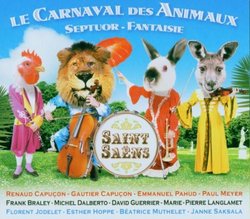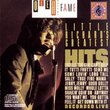| All Artists: Camille Saint-Saens, Frank Braley, Michel Dalberto Title: Saint-Saens: Carnival of the Animals; Septet Members Wishing: 0 Total Copies: 0 Label: Virgin Classics Original Release Date: 1/1/2000 Re-Release Date: 1/13/2004 Genres: International Music, Classical Styles: Europe, Continental Europe, Opera & Classical Vocal, Chamber Music, Forms & Genres, Concertos, Historical Periods, Classical (c.1770-1830), Instruments, Brass, Strings Number of Discs: 1 SwapaCD Credits: 1 UPCs: 724354560323, 724354560354 |
Search - Camille Saint-Saens, Frank Braley, Michel Dalberto :: Saint-Saens: Carnival of the Animals; Septet
 | Camille Saint-Saens, Frank Braley, Michel Dalberto Saint-Saens: Carnival of the Animals; Septet Genres: International Music, Classical
This is a delightful record. It brings together some of Europe's best musicians for a program of primarily unfamiliar works by Saint-Saëns which show him from his most playful, humorous side, and they clearly have a g... more » |
Larger Image |

 Track Listings (22) - Disc #1
Track Listings (22) - Disc #1


